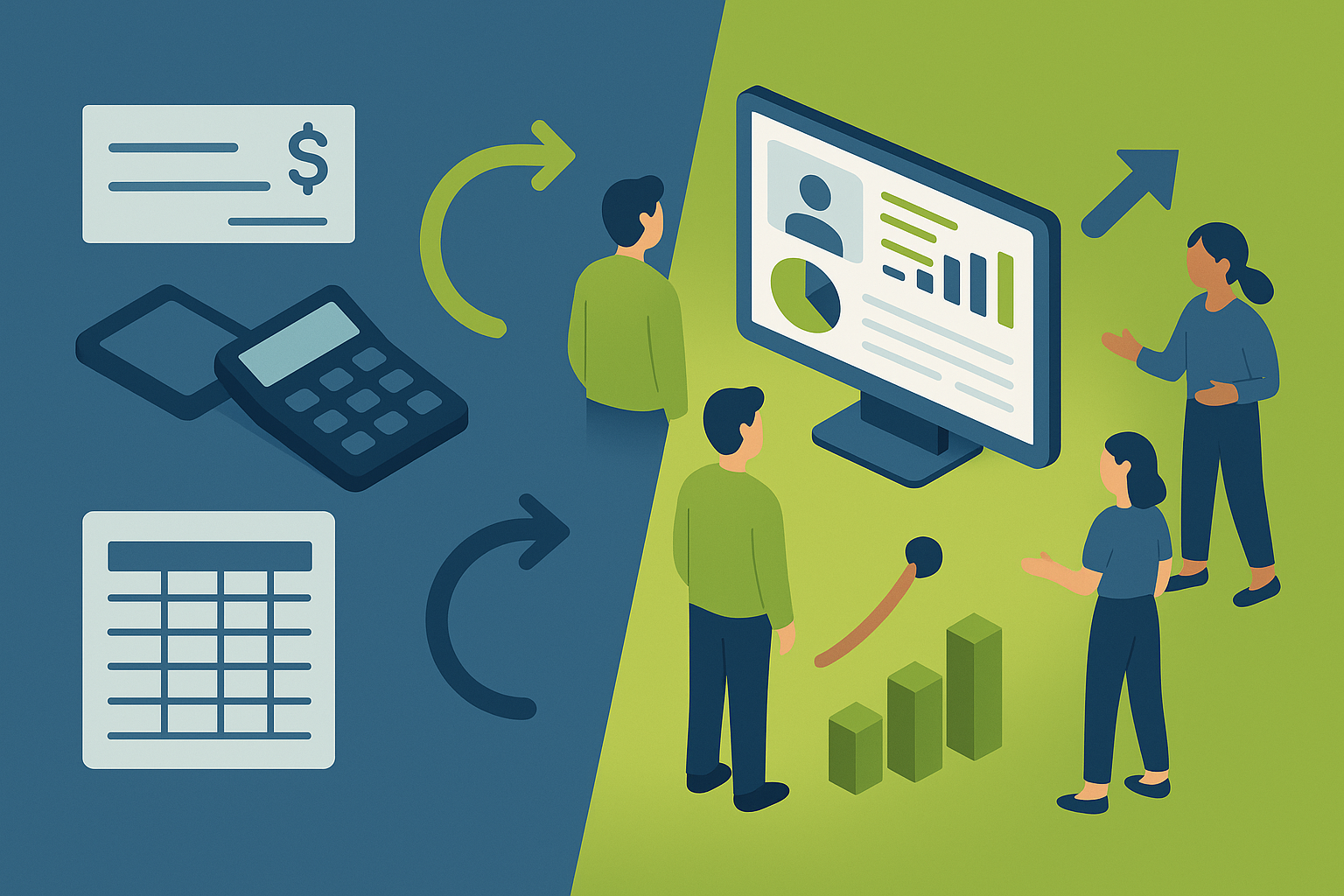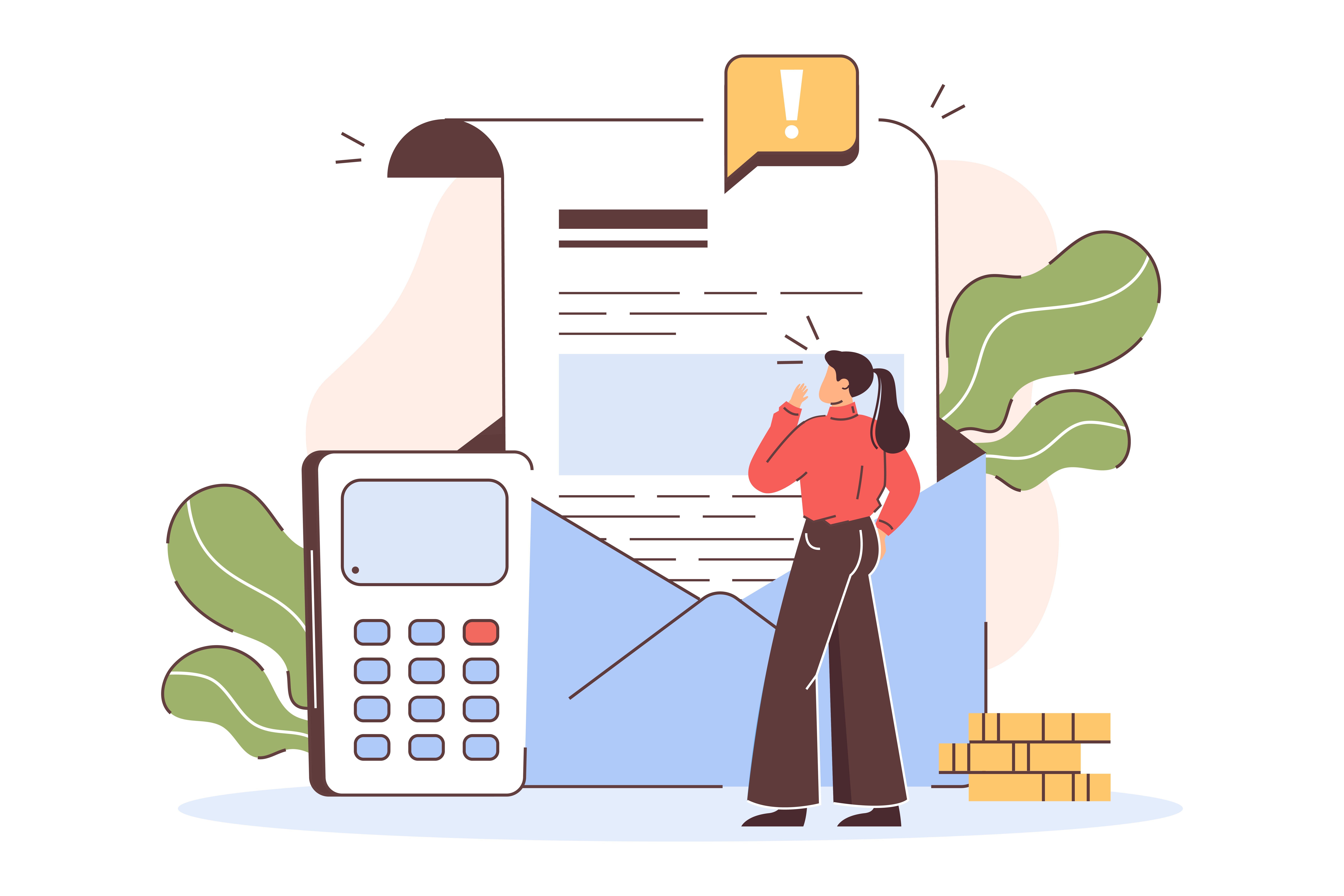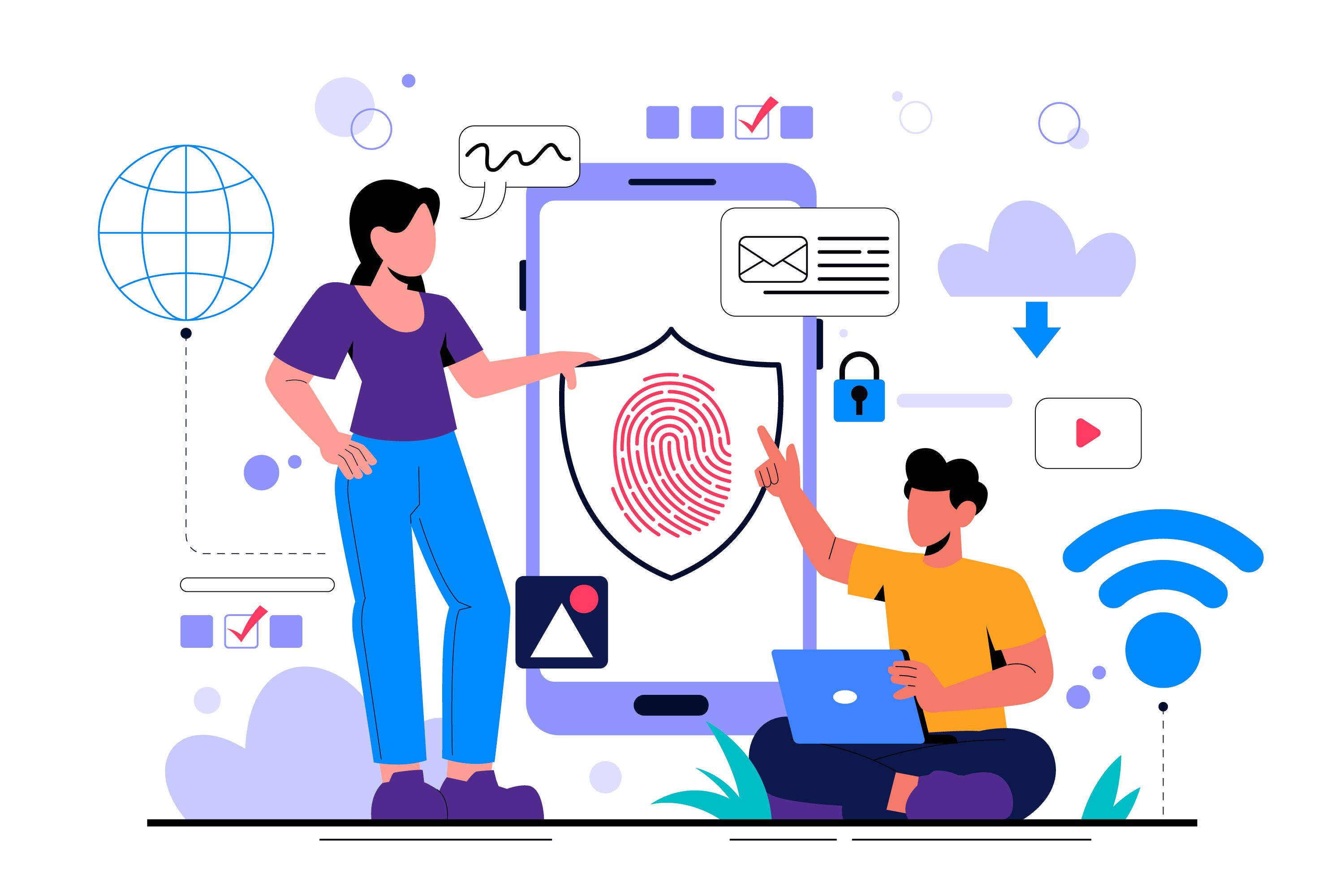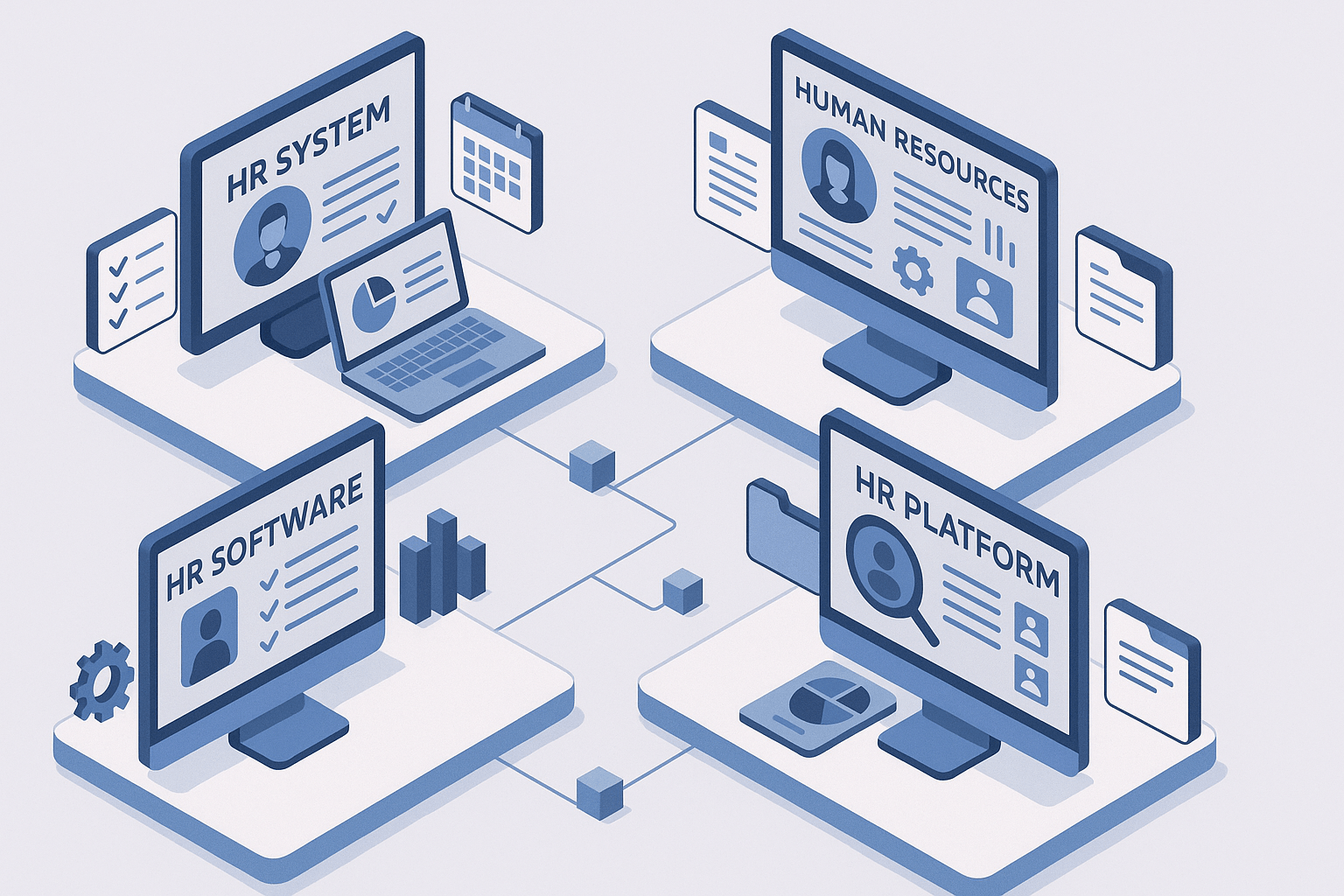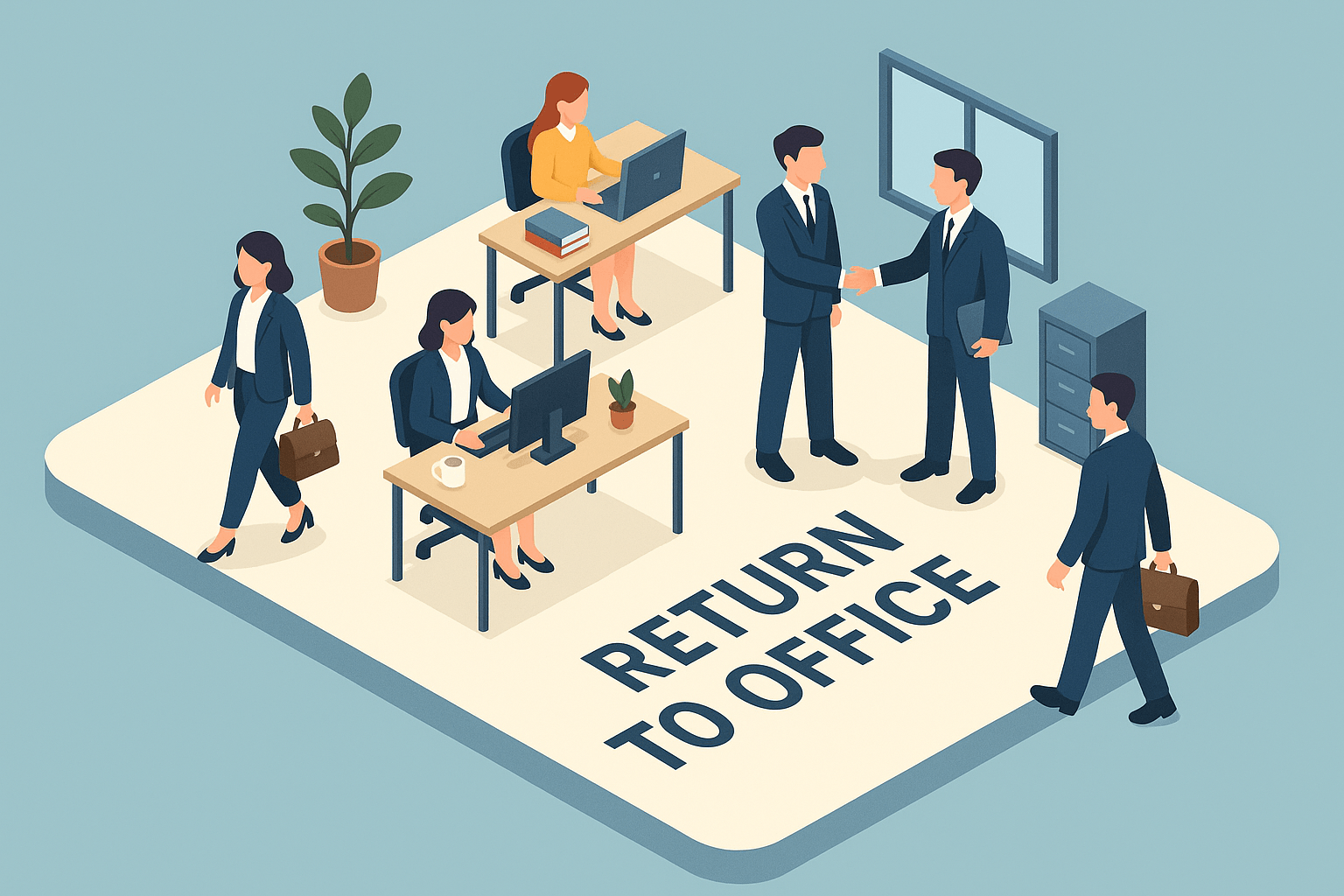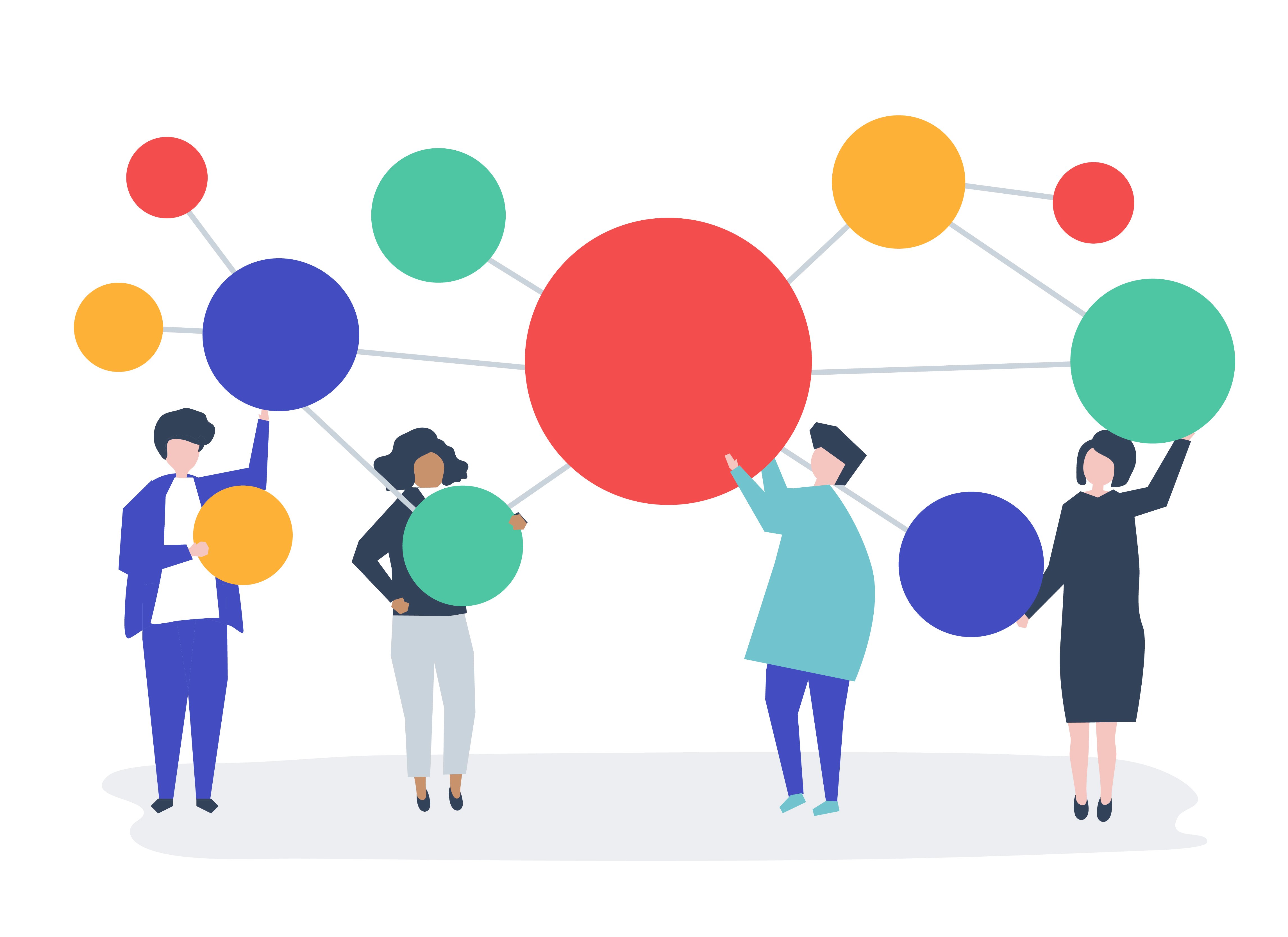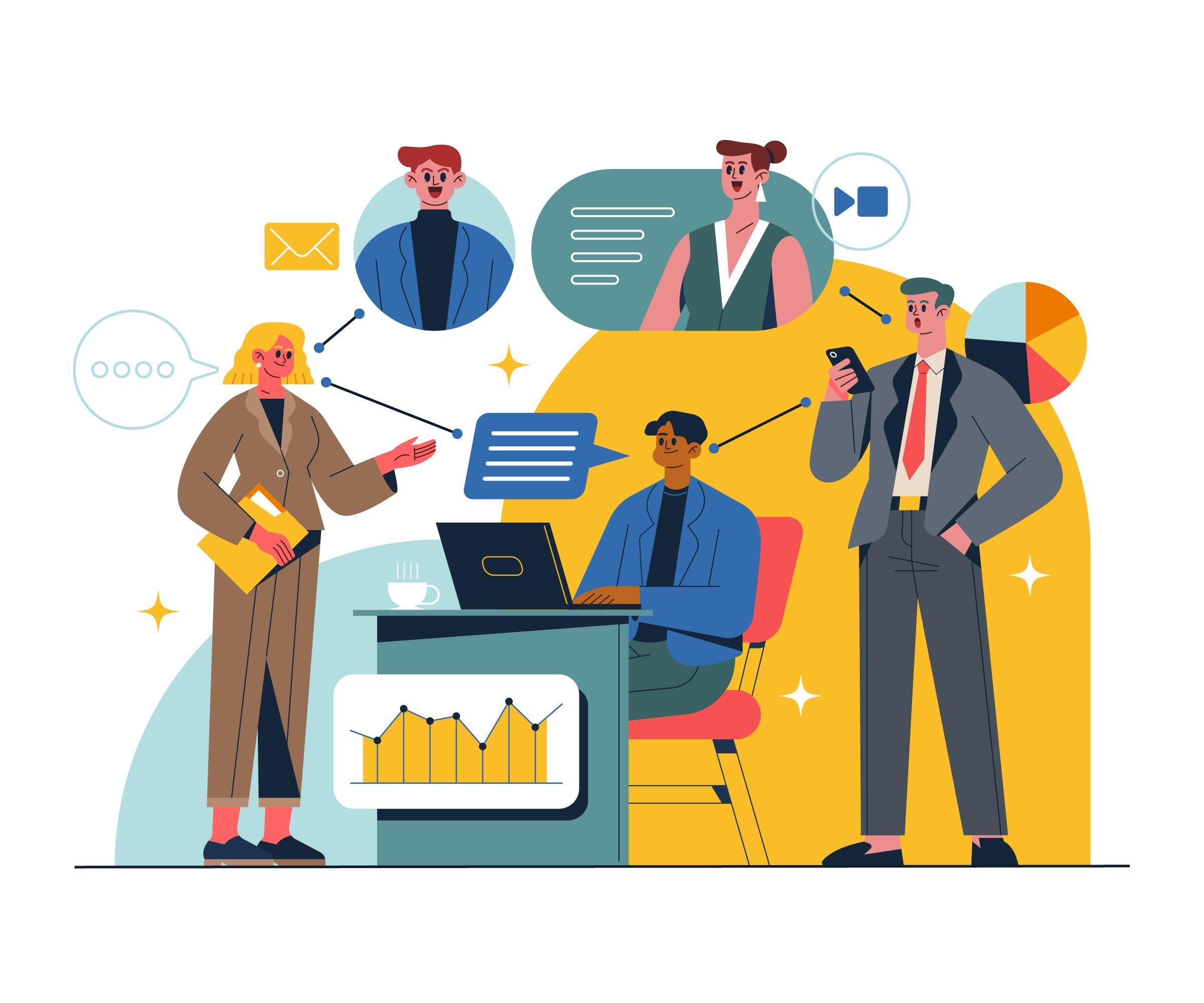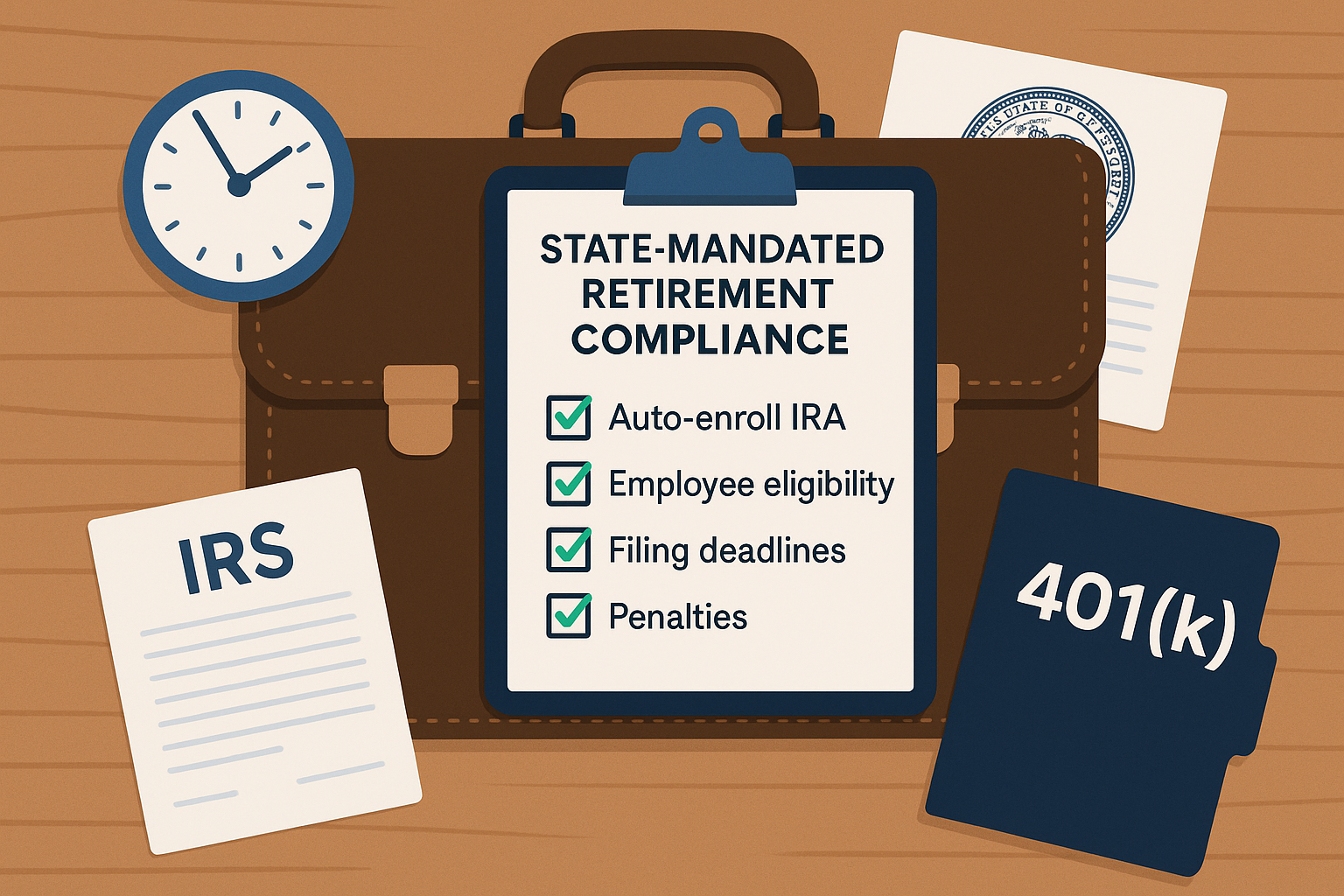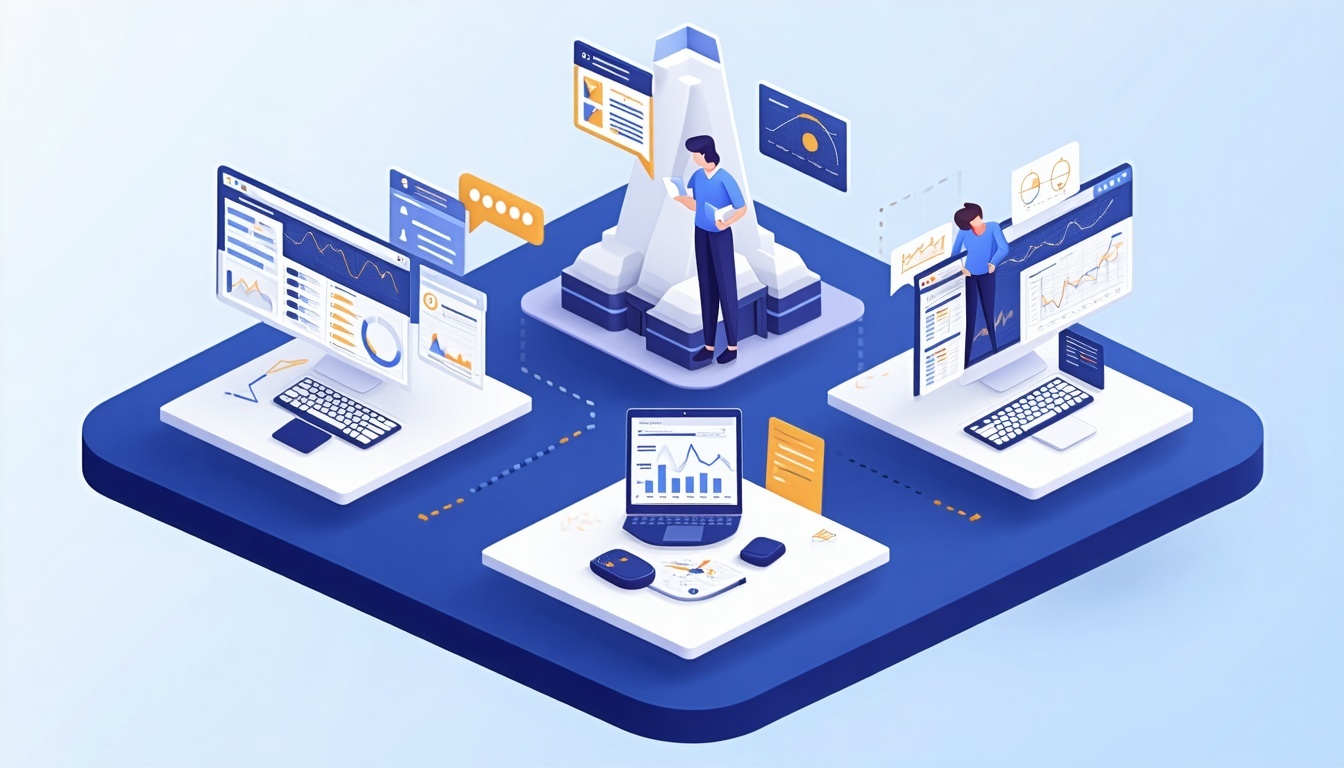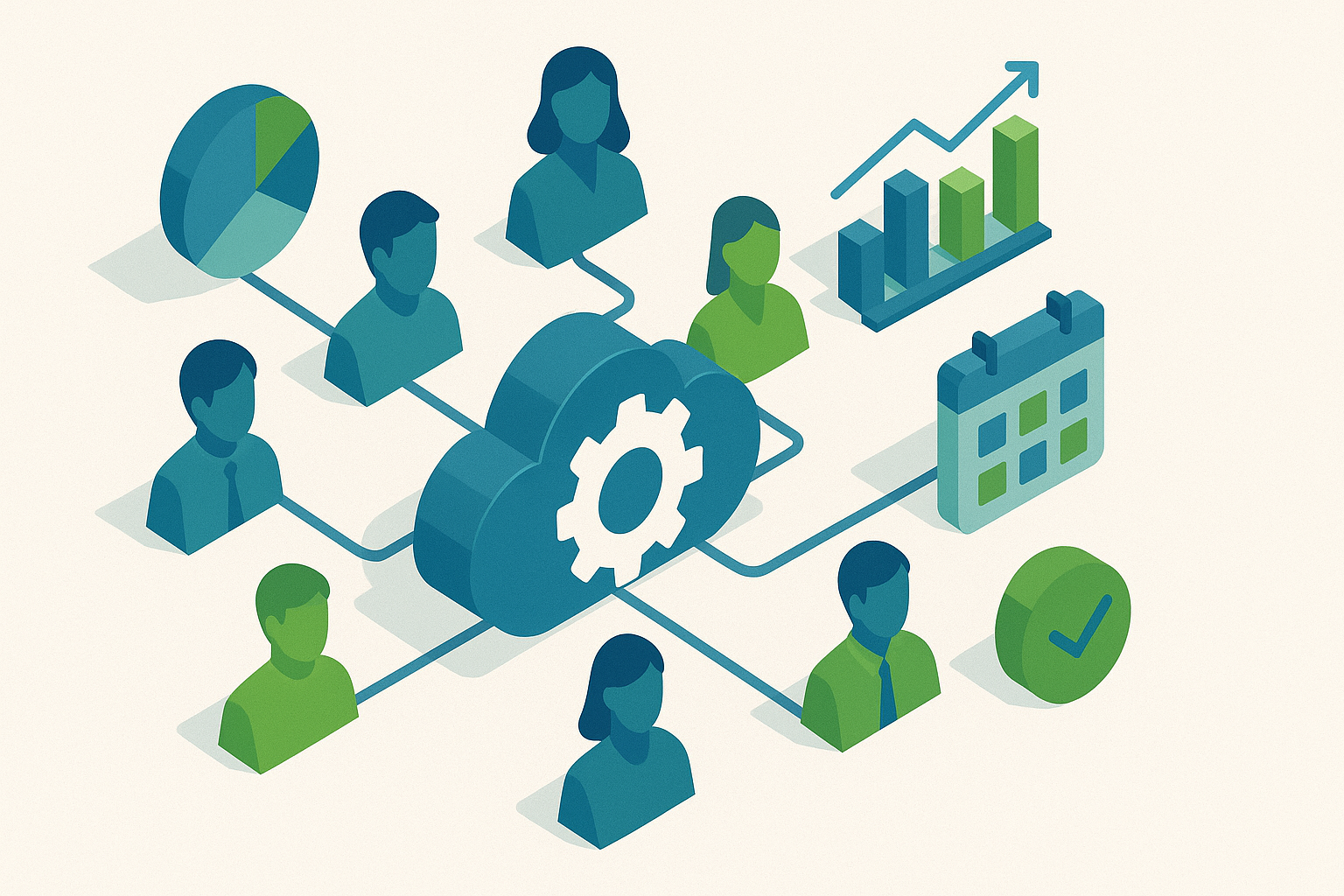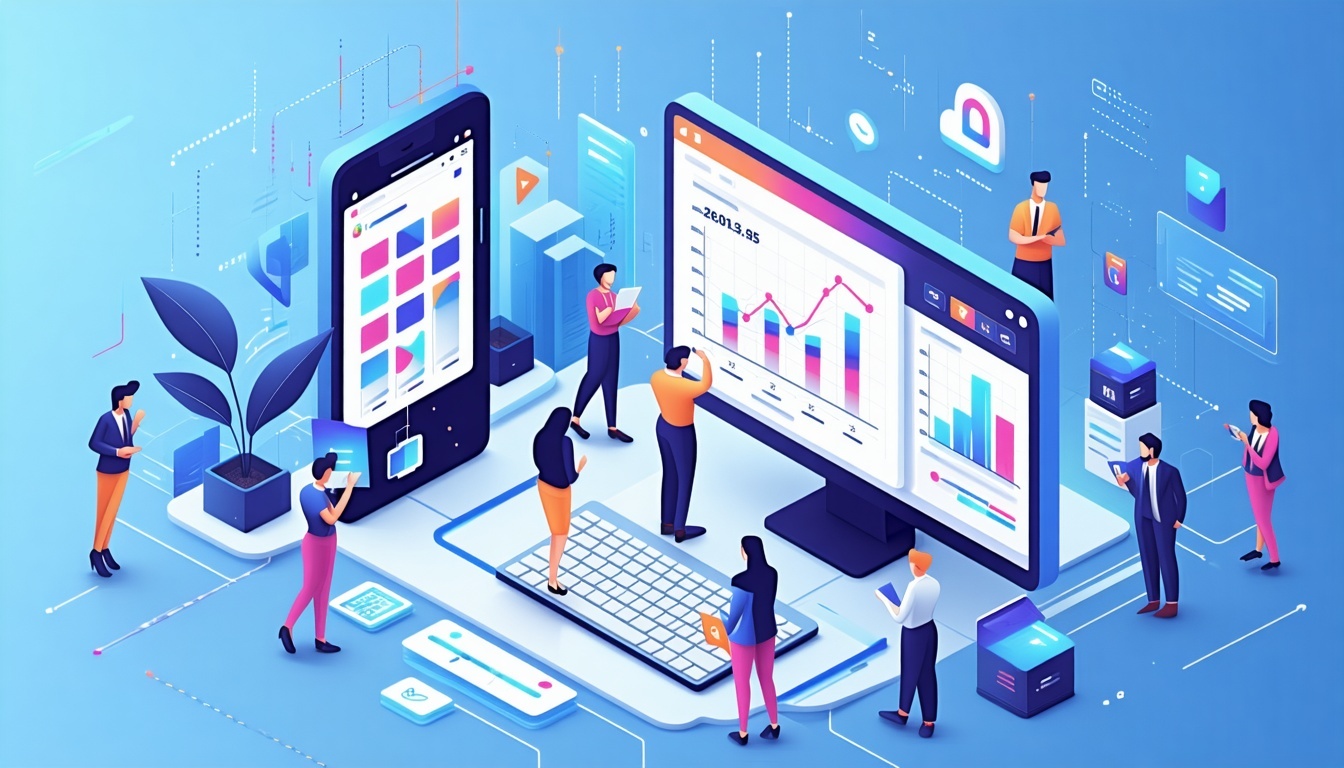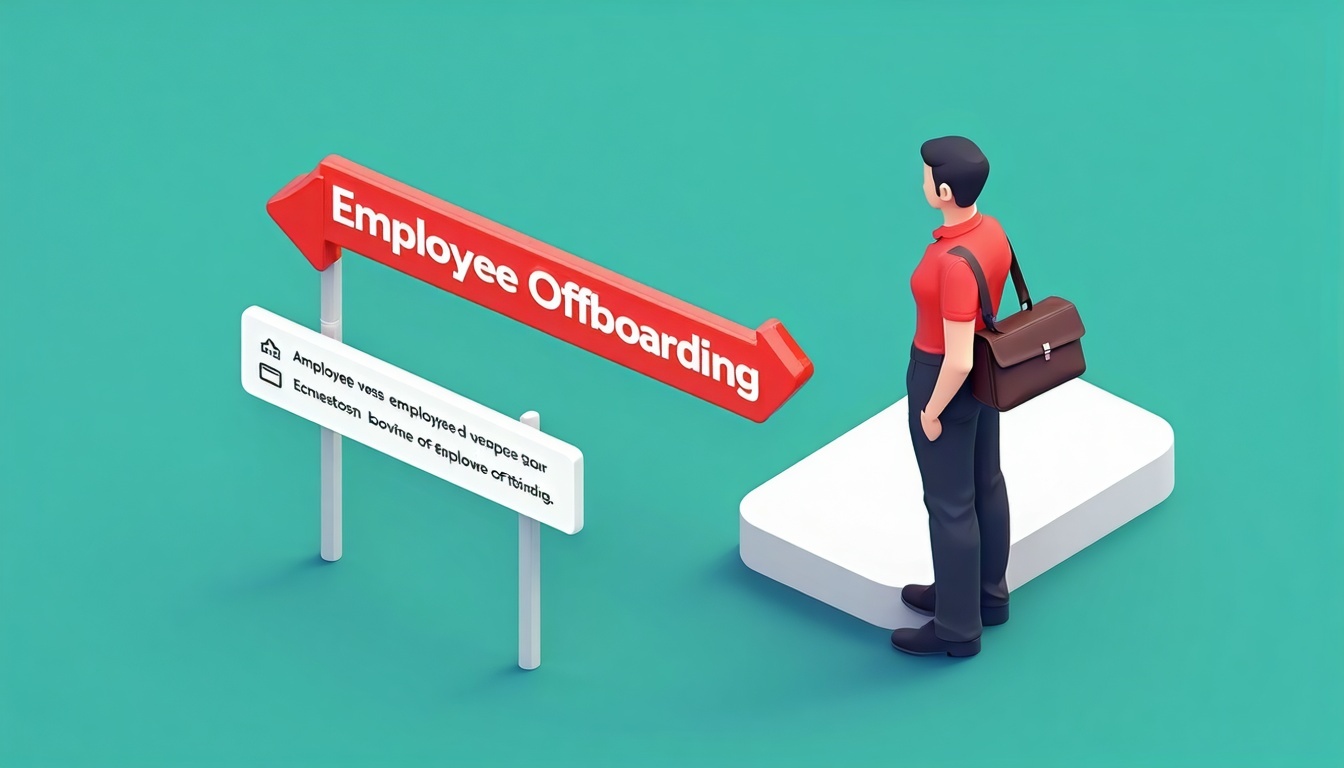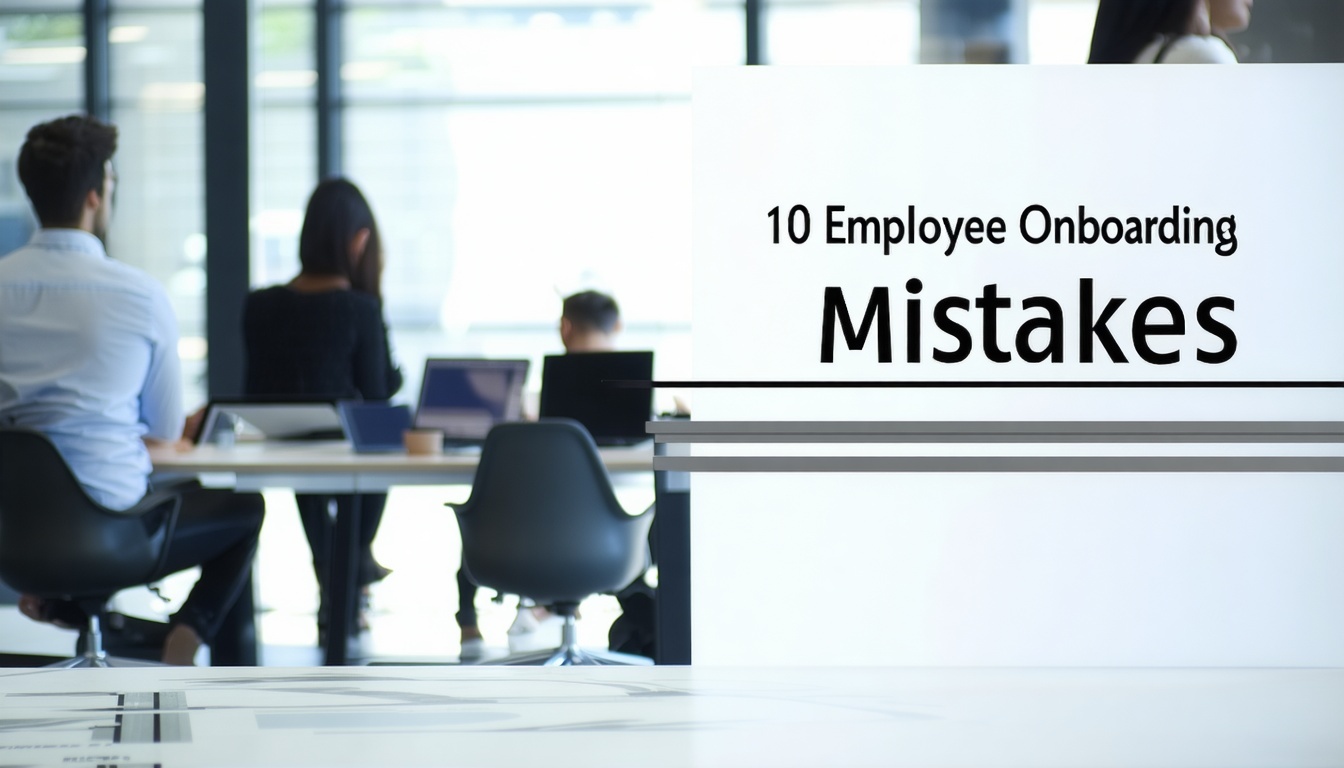Strategic Talent Management: Attracting, Developing, and Retaining Top Talent
May 9th, 2025
4 min read

You're hiring nonstop, yet still feel two steps behind. Top candidates ghost midway through the process, your best performers eye the exits, and your training programs feel more like checkbox exercises than genuine growth opportunities.
If this sounds familiar, you're not alone—and you're certainly not doing it wrong. The rules of talent management have evolved significantly. Traditional hiring practices, generic development plans, and basic retention perks aren't enough anymore.
Here's the good news: attracting, developing, and retaining top talent doesn't need to feel like a perpetual game of catch-up. It requires a strategic, holistic approach that views talent management as a continuous lifecycle rather than isolated events.
At Lift HCM, we've helped organizations across industries rethink their talent strategies. In this article, we'll guide you through modern hiring techniques, effective employee development, and powerful retention strategies designed for today's workforce.
Table of Contents
- Traditional Recruitment Methods
- Modern Approaches to Talent Acquisition
- Employee Development and Continuous Learning
- Retention Strategies for the Future
- The Evolution of Talent Management
The Cost of Traditional Recruitment
Traditional recruitment was simple but flawed. Organizations waited for vacancies, posted ads, and chose candidates based on resumes and brief interviews. This reactive method overlooked cultural fit and skills, leading to costly mistakes and turnover. Decisions were often based on intuition, not data, allowing bias and inconsistency.
Let's factor in the hidden costs. Traditional recruitment approaches carry significant hidden costs:
- Extended vacancy periods: On average, positions remain unfilled for 42 days using traditional methods, resulting in productivity losses of $1,000-$5,000 per day for key roles
- Poor hiring decisions: Studies show that traditional interview processes predict only 14% of actual on-the-job performance
- High early turnover: Companies using conventional hiring approaches experience 31% higher first-year turnover rates
- Employer brand damage: 78% of candidates report that their recruitment experience directly influences their perception of the company as a potential employer
This outdated model ignored candidate experience, damaging reputation. Today, candidates seek transparency and cultural alignment, making traditional methods a liability.
Modern Approaches to Talent Acquisition
Today’s talent acquisition strategies require proactive efforts, sophisticated tools, and a robust employer brand to attract the right candidates.
1. Building a Talent Pipeline
The best companies no longer wait for vacancies. Instead, they continuously build and nurture talent pipelines. Effective talent pipelines leverage social media platforms like LinkedIn, industry-specific forums, alumni networks, and employee referrals. By engaging passive candidates and creating an ongoing conversation, organizations significantly reduce hiring lead times and attract high-caliber talent.
Action Step: Audit your current sourcing strategy to ensure it supports proactive candidate engagement rather than reactive hiring.
2. Data-Driven Candidate Screening
Modern hiring uses objective, structured methods to identify the best candidates. Behavioral assessments, skills tests, and predictive analytics tools are now integral parts of effective talent screening. These methods reduce unconscious bias, provide deeper insights into candidate potential, and improve overall hiring quality.
Action Step: Implement a pilot program using objective screening methods in roles where turnover or poor hires have historically been high.
3. Prioritize Employer Branding
Candidates today extensively research companies before applying, evaluating culture, reputation, and employee reviews. A strong, transparent employer brand significantly enhances your ability to attract and retain top talent. Consistent messaging around your organization's values, career development opportunities, and work environment is crucial.
Action Step: Conduct a thorough audit of your digital presence from a candidate’s perspective. Update your careers page, enhance transparency about company culture, and actively manage employer review sites.
Employee Development and Continuous Learning
Attracting talent is just the beginning. Keeping employees engaged and growing is essential to sustained business success.
1. Continuous Learning Initiatives
Employees now expect continuous learning opportunities that directly impact their career advancement. Ongoing professional development, such as microlearning modules, industry-specific certifications, and real-time skill training, significantly boosts employee engagement and productivity.
Action Step: Develop an annual learning calendar featuring regular training sessions, microlearning modules, and access to online resources tailored to employee career paths.
2. Formal Mentorship Programs
Structured mentorship programs foster employee growth, enhance skills transfer, and improve retention. By pairing employees with experienced mentors, organizations create clear pathways for professional development and career progression.
Action Step: Implement a formal mentorship program with clearly defined goals, timelines, and measurable outcomes. Regularly assess the effectiveness and make improvements based on feedback.
3. Early Leadership Development
Preparing future leaders early is critical. Organizations that provide leadership development opportunities early on see higher engagement, better succession planning outcomes, and improved organizational agility.
Action Step: Identify emerging leaders early and offer structured leadership training, stretch assignments, and cross-departmental experiences to accelerate growth.
4. Align Learning with Business Goals
Effective employee development aligns with organizational goals and addresses specific skill gaps. Training should always link back to business objectives and measurable outcomes to ensure maximum return on investment.
Action Step: Regularly collaborate with department leaders to identify skills gaps and build targeted development programs that support organizational objectives.
Retention Strategies for the Future
Effective retention strategies focus on meaningful employee engagement, tailored career paths, and supportive work environments.
1. Personalized Career Paths
Top performers seek personalized development paths aligned with their individual goals and strengths. Organizations must move away from one-size-fits-all promotion ladders toward customized career progression frameworks.
Action Step: Develop and regularly review Individual Development Plans (IDPs) tailored to employee aspirations, incorporating actionable steps and clear milestones.
2. Invest in Manager Capability
Employees frequently leave due to poor management experiences. Investing in robust managerial training programs that emphasize coaching, communication, and leadership skills is vital for employee retention.
Action Step: Review your current management training programs, ensuring they prioritize essential leadership skills and ongoing manager development.

The bar chart shows a stark contrast in engagement, retention, and productivity between organizations with low-performing and highly effective managers, with top managers achieving 67% engagement versus 23% for the lowest tier.
3. Recognition Over Rewards
Authentic, frequent recognition significantly enhances employee satisfaction and engagement. Structured recognition programs can transform company culture, making employees feel valued beyond monetary incentives.
Action Step: Implement structured recognition initiatives such as peer recognition platforms, manager-led appreciation events, and regular celebration of team achievements.
4. Make Flexibility Standard
Flexibility is now an expectation, not a perk. Offering options such as remote work, hybrid arrangements, and flexible scheduling significantly improves employee retention and satisfaction.
Action Step: Clearly define and communicate flexible work policies. Regularly survey employees to understand their preferences and adapt policies accordingly.
This bar chart compares productivity and satisfaction across six work arrangements, highlighting that flexibility boosts both, with remote work and flexible hours performing best.
The Evolution of Talent Management
Reactive hiring, occasional training, and generic retention tactics are now obsolete. Successful organizations proactively manage talent pipelines, offer continuous development, and provide personalized retention strategies.
The evolution continues with AI-driven recruitment, personalized learning, and data-driven retention initiatives. At Lift HCM, we strive to always provide the tools and insights necessary to adapt effectively, ensuring your organization remains competitive by attracting, developing, and retaining exceptional talent.
Your Next Step: Ready to transform your talent management strategy? Explore our comprehensive talent management solutions today.
Caitlin Kapolas is a results-driven professional with a strong background in account management and retail. She is dedicated to improving client experiences and building lasting relationships. Caitlin excels in identifying client needs, resolving issues, and implementing customized solutions that drive value. Her effective communication skills ensure high client satisfaction and loyalty, making her a trusted advisor and partner in meeting client needs with precision and professionalism.








.png?width=473&height=315&name=Digital%20Employee%20Experience%20DEX%20in%20HCM-21%20(1).png)

